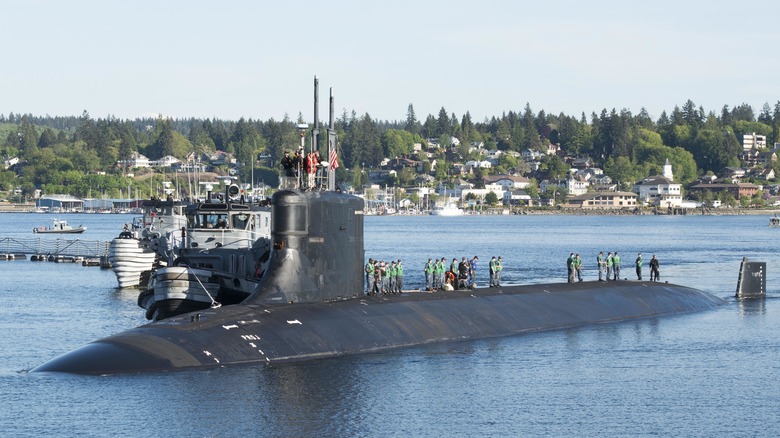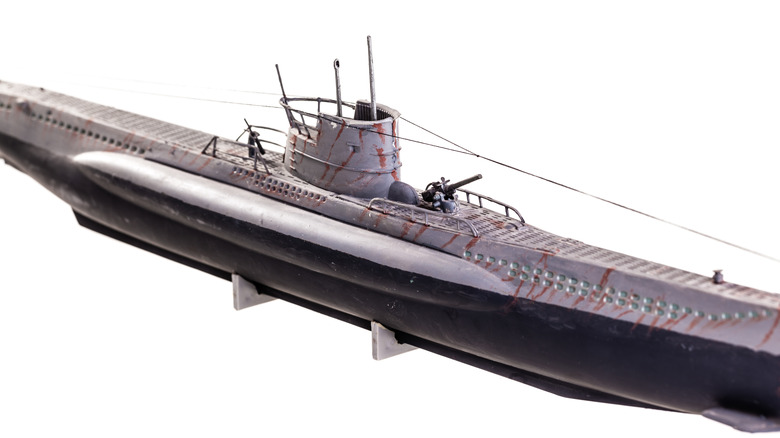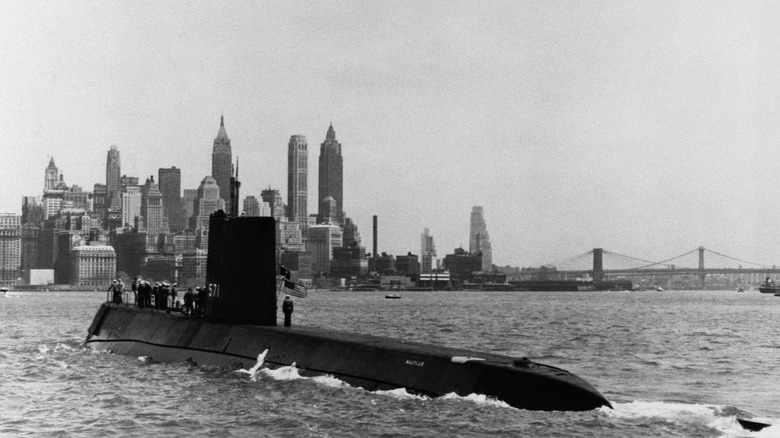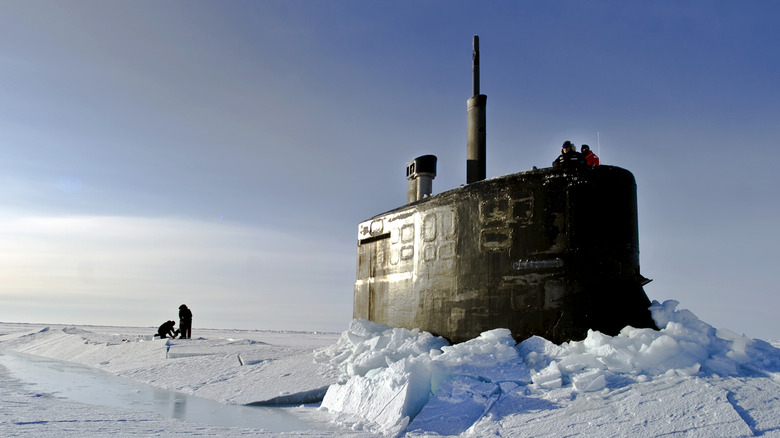USS Seawolf: The Highly Advanced Submarine That Changed Underwater Warfare
Technically, a submarine (as opposed to a submersible) is a water-going vessel that can sail, submerge, and surface under its own power, without the need for a "parent" ship for support. Almost incredibly, the world's first submarine was developed way back in 1620 by a Dutchman, Cornelis Drebbel, who was working in the service of Great Britain's King James I.
From a military perspective, the appeal of a stealthy underwater vessel that can attack enemy ships undetected is obvious, but it took another 263 years before a submarine was successfully used in combat. In 1863, the H.L. Hunley, operated by Confederate forces in the American Civil War, ushered in a new era of naval warfare when it sank the USS Housatonic, before itself foundering with the loss of its crew.
While some characteristics of 19th-century vessels like the Hunley would be familiar to sailors today, much has changed in the intervening years. Thanks partly to the two World Wars, the 20th Century saw massive technical development of weapons systems of all kinds, including submarines.
Today, submarines can stay at sea for hundreds of days, projecting power all over the globe from the safety of the deep ocean. One of those vessels is the USS Seawolf (SSN 21), a nuclear submarine developed during the Cold War by the U.S. Navy to confront the forces of the Soviet Union. With its two sister ships, it remains among the most advanced, most lethal weapons fielded by any nation.
The advent of nuclear power
In World War I and World War II, submarines were largely tactical weapons, with a hybrid powertrain consisting of diesel engines and electric motors. At sea, a submarine commander had two options — speed, or stealth. On the surface, where its diesel engines could be run, a submarine might manage a speed of around 20mph — enough to catch up to a cargo ship.
However, in order to safely attack, the commander would have to shut the diesel engines off, submerge, and rely on battery power for propulsion. Underwater, speed was halved, and a vessel could remain submerged only for as long as its heavy lead-acid batteries lasted — sometimes just a couple of hours. To make matters worse, if exposed to seawater, the fragile batteries of that era would leak dangerous chlorine gas.
Ironically, during World War I and World War II, the submarines fielded by the world's naval forces spent most of their time on the ocean's surface, only submerging for brief periods when it came time to attack. That all changed with the advent of nuclear power. Unlike conventional diesel-powered forebears, nuclear-powered submarines can remain submerged indefinitely and keep up with surface vessels' speed, even underwater.
The only known example of a nuclear-powered submarine being used in combat was in 1982, when the British submarine HMS Conquerer sank the fast-moving Argentine cruiser General Belgrano after stalking it unseen for two days. A traditional, diesel-powered submarine would have been incapable of making such an attack.
A stealthy underwater weapon
The USS Seawolf can trace its lineage back to the mid-1950s, to the first-ever nuclear-powered submarine — the USS Nautilus. Like the submarines of World War II, the Nautilus carried conventional torpedoes, but could fire quicker, further, and far more stealthily than the vessels that came before it. That's because, unlike diesel engines, nuclear reactors don't require oxygen to operate, and refueling intervals to top up the enriched uranium used for power are measured in decades, rather than weeks or months.
By the time the Seawolf and its sister ships were being developed, nuclear power was a mature technology, but in other respects, its design was revolutionary. Compared to the Los Angeles 688-class submarines that were in use (and still form the backbone of the U.S. Navy's submarine fleet), the Seawolf class features a stronger hull made of high-pressure HY-100 steel, and greatly increased weapons capacity, including twice as many torpedo tubes. The Seawolf also boasts the highest tactical speed of any submarine in the U.S. fleet.
One of the main tactical advantages of the Seawolf, though, is that it's really quiet. The USS Seawolf and its sister ships can operate around 10 times more quietly than even the quietest Los Angeles-class submarines, making it capable of "stealth" missions that would be impossible for previous-generation subs. These might include covert surveillance of sensitive areas or the insertion of special forces personnel.
Performance and operational history
The USS Seawolf's motto, "Cave Lupum" ("beware the wolf") is appropriate, given its impressive specifications. Exact performance figures are known only to the U.S. Navy, but officially, the submarine can make around 20 knots (~23mph) on the surface, and around 35 knots (~40mph) submerged.
Its operating depth is given at 800+ feet, with a safe depth of 1,600 feet and a rated "crash" depth of 2,250 feet, or almost half a mile underwater. Its crew of around 140 sailors is in charge of a fearsome arsenal of weapons, including Tomahawk missiles, mines, and up to 50 advanced MK48 torpedoes.
The USS Seawolf was launched in 1995, commissioned in 1997, and completed sea trials in 2001. After 9/11, Seawolf was deployed that same year, taking part in several exercises with NATO forces. Since then, the USS Seawolf has been deployed multiple times on missions often lasting several months.
When design work on the Seawolf started in the early 1980s, the intention was to build a fleet of 29 vessels, but the end of the Cold War removed the need for so many. Ultimately, only three Seawolf-class submarines were built, the USS Seawolf, the USS Connecticut (pictured above), and the USS Jimmy Carter.
The USS Jimmy Carter is a highly modified version of the submarine and the last to be commissioned. It features an extended hull to accommodate a "multi-mission platform" (MMP) for classified missions. All three Seawolf-class submarines are based at Naval Base Kitsap-Bangor in Washington State.



